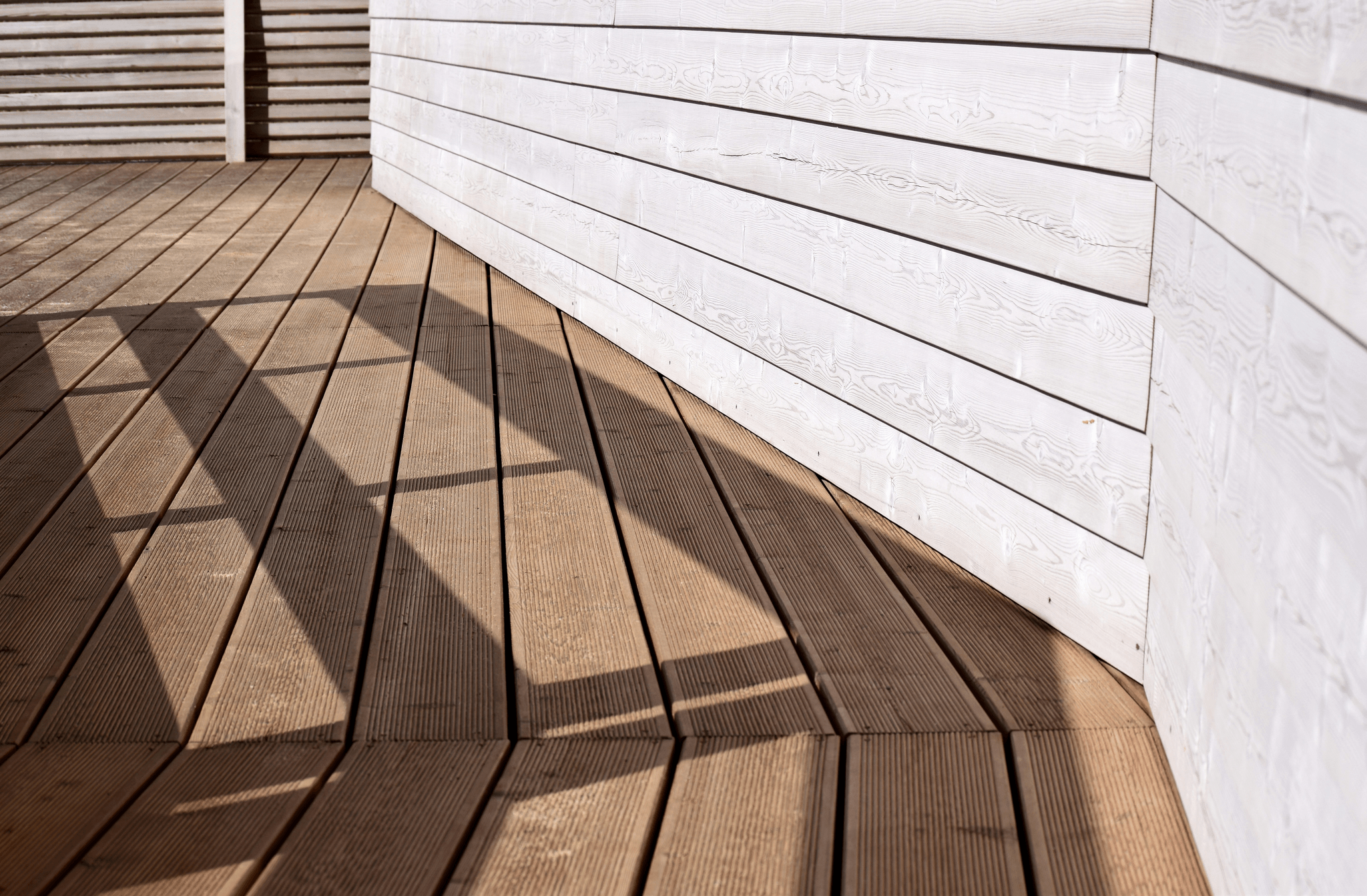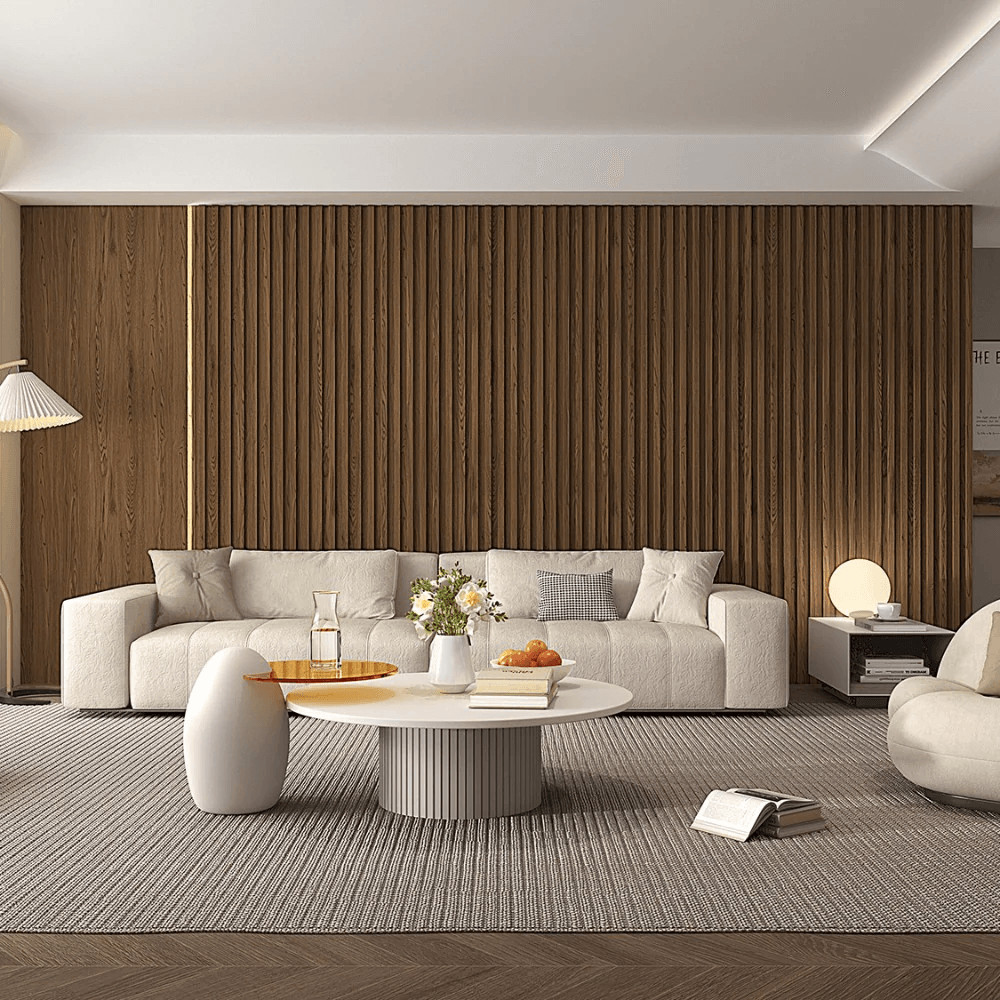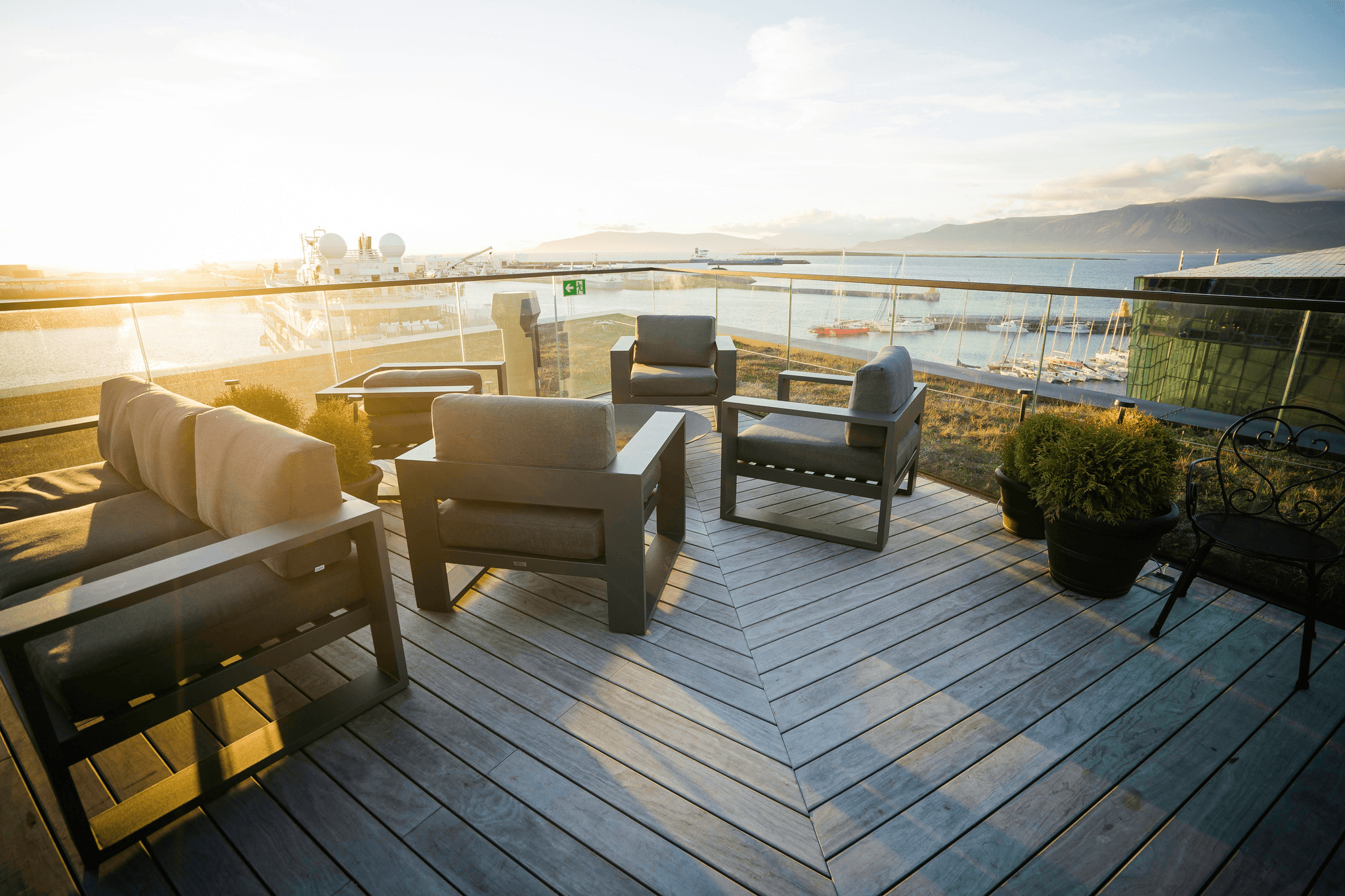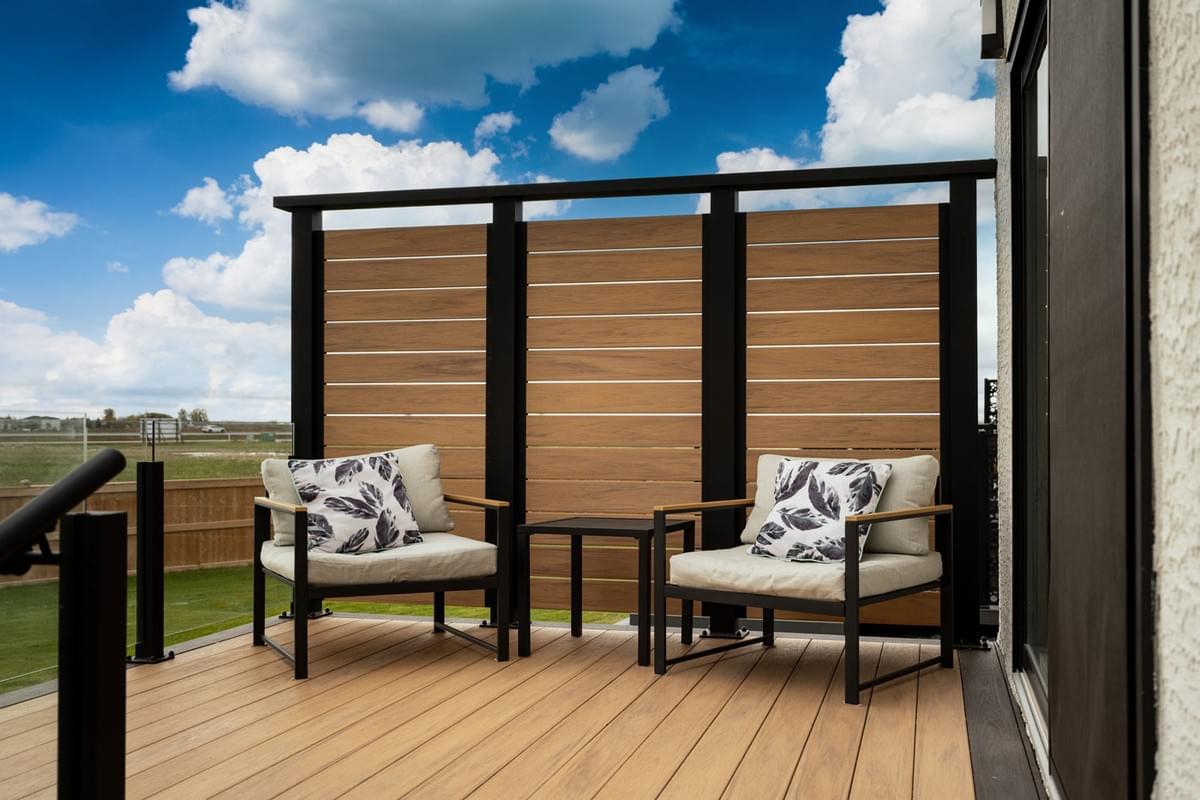Introduction

When it comes to enhancing your outdoor space, choosing the right decking option can feel like navigating a maze of possibilities. With so many materials available, from traditional wood decks to modern composite decking solutions, it's crucial to understand what each option brings to the table. This guide will help demystify the choices and highlight why composite lumber decking is becoming a favorite among homeowners.
Understanding Decking Options
Decking options have evolved significantly over the years, with composite decking emerging as a strong contender against classic wood decks. Homeowners are increasingly drawn to synthetic lumber for decks that promise durability and aesthetic appeal without the constant upkeep associated with wood. By exploring different materials, you can make an informed decision that suits both your lifestyle and budget.
The Cost Factor in Decking Choices
Cost is often a primary concern when selecting between composite decking and traditional wood options. While initial expenses may vary widely—especially when comparing composite deck boards to various types of wood—the long-term savings associated with maintenance and replacement should not be overlooked. Ultimately, understanding the full financial picture will help you weigh the pros and cons of each material more effectively.
The Benefits of Composite Decking
Composite decking offers a range of benefits that make it an attractive choice for many homeowners today. Not only does it provide exceptional durability against weather elements, but its low-maintenance nature means you'll spend less time worrying about upkeep compared to wood decks. Additionally, advancements in technology have made composite lumber decking visually appealing, mimicking natural wood while offering superior performance.
Overview of Composite Decking

Composite decking has emerged as a popular choice for homeowners looking to enhance their outdoor spaces. This innovative material combines wood fibers and plastic, resulting in a product that mimics the appearance of traditional wood decks while offering superior durability. As we delve into the world of composite lumber decking, it's essential to understand its unique characteristics and benefits.
What is Composite Decking?
Composite decking is a synthetic alternative to traditional wood decks, designed to provide an aesthetically pleasing and long-lasting solution for outdoor living spaces. It typically consists of a blend of recycled wood fibers and plastic materials, which are engineered to resist fading, splintering, and warping. This combination not only enhances the visual appeal but also significantly reduces maintenance compared to conventional wood decks.
By opting for composite deck boards, homeowners can enjoy the beauty of natural wood without the associated drawbacks such as constant staining or sealing. The result is a versatile decking option that caters to various design preferences while promoting sustainability through the use of recycled materials. Understanding what composite decking entails is crucial when weighing your options against traditional wood decks.
Advantages of Composite Lumber Decking
One major advantage of composite lumber decking lies in its low maintenance requirements compared to wood decks. Homeowners can say goodbye to annual staining or sealing; instead, a simple wash with soap and water will do the trick! Additionally, composite materials are resistant to mold and mildew growth, making them ideal for damp climates.
Another significant benefit is longevity; composite decking typically lasts 25-30 years or more with proper care—far outpacing most natural woods like cedar or pine. This durability translates directly into cost savings over time when considering the composite decking vs wood cost debate; fewer repairs mean more cash in your pocket! Furthermore, many composites come with warranties that guarantee their performance against fading and cracking.
Lastly, aesthetics play a vital role in choosing your deck material. Composite lumber decking offers an extensive range of colors and finishes that mimic real wood species while ensuring uniformity throughout your deck's surface—no more mismatched boards! Whether you're going for a rustic look or modern elegance, there's likely a composite option tailored just for you.
Popular Brands and Their Offerings
When it comes to selecting the right composite decking brand, several industry leaders stand out due to their quality products and innovative designs. Trex is one such name synonymous with high-performance synthetic lumber for decks; they offer various styles that cater to both budget-conscious consumers and those seeking premium options alike. Their eco-friendly approach uses recycled materials without compromising on aesthetics or durability.
Another noteworthy contender is TimberTech (now part of Azek), which prides itself on producing low-maintenance composite deck boards that boast advanced technology for enhanced weather resistance and longevity—perfect if you live in areas prone to harsh weather conditions! With an impressive array of colors available in both solid and multi-tonal finishes, there's something for every homeowner's taste.
Lastly, Fiberon rounds out our list by providing affordable yet stylish options within their lineup designed specifically for easy installation—a bonus if you're planning on tackling this project yourself! Their offerings focus heavily on sustainability while delivering quality products that compete head-to-head with other leading brands in terms of performance standards.
The Wood Decks Dilemma

When it comes to choosing between wood decks and composite decking, homeowners often find themselves in a quandary. Traditional wood decks have a timeless charm that many love, but modern advancements in synthetic lumber for decks have changed the game. This section will explore the nuances of both options, weighing their pros and cons.
Traditional vs. Modern Wood Decks
Traditional wood decks, typically made from cedar or redwood, offer aesthetic appeal and a natural feel that many homeowners cherish. However, modern wood options like pressure-treated lumber can provide durability at a lower upfront cost. On the flip side, composite decking has emerged as a strong contender with its blend of plastic and wood fibers, promising longevity without sacrificing style.
While traditional wood may require more upkeep to maintain its beauty over time, modern alternatives are designed to withstand the elements better than ever before. In contrast, synthetic lumber for decks boasts resistance to fading and splintering—two common issues with natural woods. Ultimately, the choice between traditional and modern wood comes down to personal preference and lifestyle needs.
Costs of Various Wood Types
The costs associated with different types of wood can be quite varied depending on quality and availability. For instance, pressure-treated pine is typically more affordable but may not last as long as higher-end options like mahogany or teak—both of which come with hefty price tags. When comparing these costs against composite decking vs wood cost scenarios, it's essential to consider not just initial expenses but also long-term investment value.
Higher-quality woods may require significant upfront investment but could enhance your property’s resale value over time if maintained properly. In contrast, while composite deck boards might seem pricier initially, they often lead to savings in maintenance costs down the road due to their durability and low upkeep requirements. Understanding these financial implications is crucial when deciding which decking option aligns best with your budget.
Maintenance and Longevity of Wood Decks
Maintenance is where traditional wood decks often fall short compared to their composite counterparts; regular staining or sealing is essential to prolong their lifespan effectively. Without proper care—think annual treatments—you risk facing rot or warping issues that can lead to costly repairs or replacements later on. In contrast, composite lumber decking requires minimal upkeep; occasional cleaning is usually all that's needed to keep it looking great year after year.
Longevity also plays a pivotal role in this debate; while well-maintained wooden decks can last 15-20 years at best, composite materials can easily exceed 25 years without significant deterioration when properly installed and cared for. This means that although you might pay more upfront for deck composite decking materials than for some cheaper woods initially, you could save money over time due to reduced maintenance needs and longer life expectancy overall—a win-win situation!
In summary, weighing the benefits of each option reveals important insights into whether you should invest in traditional woods or opt for innovative composites designed specifically for outdoor living spaces.
Composite Decking vs Wood Cost Breakdown

When it comes to deciding between composite decking and traditional wood decks, the cost is a significant factor that can sway your decision one way or the other. Understanding the nuances of initial installation costs, long-term savings, and how these materials impact resale value is crucial for homeowners looking to invest wisely in their outdoor spaces. Let’s dive into the numbers and see how composite lumber decking stacks up against wood.
Initial Installation Costs
The initial installation costs for composite decking often come with a higher price tag compared to wood decks. On average, homeowners can expect to pay about 20-30% more for synthetic lumber for decks than they would for traditional wood options like pressure-treated pine or cedar. While this might seem daunting at first glance, many find that the benefits of composite deck boards justify this upfront investment in terms of durability and aesthetics.
However, it’s essential to consider that installation costs can vary significantly based on factors such as location, labor rates, and specific product choices within the composite decking vs wood cost debate. If you opt for premium brands within the composite category or intricate designs with unique patterns, those expenses can climb even higher. Yet, savvy shoppers may find competitive pricing among various suppliers that help balance out these initial costs.
Long-term Cost Savings
One of the most compelling arguments in favor of choosing composite lumber decking over traditional wood is its long-term cost savings potential. Unlike wood decks that require regular maintenance—think staining, sealing, and repairs—composite decking typically needs minimal upkeep beyond occasional cleaning with soap and water. Over time, these reduced maintenance needs translate into substantial savings on both time and money.
Moreover, since composite materials are designed to withstand harsh weather conditions without warping or splintering like natural wood does, you won't face unexpected replacement costs due to damage from rot or pests over time. Homeowners often report saving hundreds of dollars annually when switching from a traditional wooden deck to a durable synthetic option; thus making an informed choice here pays off handsomely in the long run.
Resale Value Considerations
When it comes to resale value considerations in the great debate of composite decking vs wood cost, many studies indicate that properties featuring high-quality composite decks tend to attract buyers more readily than those with aging wooden structures. Homebuyers appreciate low-maintenance options that promise longevity without extensive upkeep—a key selling point if you're looking down the road at future property sales.
Additionally, while initial investments in synthetic lumber may be higher than those associated with traditional wood decks, they often yield better returns upon resale due to their modern appeal and durability factors—qualities increasingly valued by today’s homebuyer demographic. In essence, investing in quality composite deck boards could not only enhance your outdoor living experience but also serve as a strategic financial move when it's time to sell your home.
Comparing Maintenance Requirements

When it comes to choosing between composite decking and wood decks, maintenance is a crucial factor that can significantly influence your decision. Each material requires different levels of upkeep, which can also affect the overall cost of ownership over time. Understanding these maintenance requirements will help you make an informed choice that fits your lifestyle and budget.
Upkeep of Composite Deck Boards
Composite deck boards are designed to be low-maintenance, allowing homeowners to enjoy their outdoor spaces without the hassle of frequent upkeep. Typically made from a blend of wood fibers and recycled plastics, composite decking resists fading, staining, and rotting—meaning you can spend more time enjoying your deck rather than maintaining it. A simple wash with soap and water is usually all that's required to keep composite lumber decking looking fresh and vibrant throughout the seasons.
Additionally, unlike traditional wood decks that may need annual sealing or staining, synthetic lumber for decks often comes with warranties that guarantee performance for decades with minimal care. This ease of maintenance translates into savings in both time and money over the life of the deck. Therefore, if you're considering composite decking vs wood cost in terms of upkeep, you'll likely find composite options to be far less demanding.
Wood Deck Maintenance Costs
On the flip side, maintaining wood decks can be a labor-intensive affair that involves regular inspections and treatments to prolong their lifespan. Depending on the type of wood used—whether it's pressure-treated pine or exotic hardwoods—maintenance costs can vary significantly but generally add up quickly over time. Homeowners must budget for annual sealing or staining treatments as well as occasional repairs due to warping or insect damage.
These ongoing expenses should be factored into any comparison between composite decking vs wood cost since they contribute significantly to long-term ownership costs. Moreover, neglecting proper maintenance can lead to costly repairs or even premature replacement of wooden structures—a risk not typically associated with composite deck boards. If you're looking at total ownership costs over several years, it’s clear that maintaining a wood deck could weigh heavily on your wallet.
Time Investment for Each Material
In addition to financial considerations, it's essential to evaluate how much time you're willing—or able—to invest in maintaining your outdoor space. Composite decking requires minimal effort; once installed, you might only need an hour or two annually for cleaning purposes—making it ideal for busy homeowners who want a beautiful space without constant attention.
Conversely, if you opt for traditional wood decks, expect significant time commitments each year dedicated solely to maintenance tasks like sanding down rough spots or applying protective coatings against weather damage. These activities not only consume hours but also require some level of skill and physical effort—factors worth considering when comparing synthetic lumber for decks versus traditional materials in terms of lifestyle compatibility.
Ultimately, whether you choose composite lumber decking or stick with classic wooden options will depend on how much value you place on ease versus aesthetics—and how much free time you've got on your hands!
Environmental Impact and Sustainability

When it comes to decking choices, the environmental impact is a significant consideration for many homeowners. Composite decking has emerged as a popular alternative due to its eco-friendly attributes, especially when compared to traditional wood decks. Understanding the sustainability factors surrounding composite lumber decking can help you make an informed decision that benefits both your home and the environment.
Eco-Friendly Aspects of Composite Decking
Composite decking is primarily made from recycled materials, which significantly reduces the demand for new lumber and helps divert waste from landfills. By utilizing synthetic lumber for decks, manufacturers can create durable products that last longer than traditional wood while requiring less frequent replacement. This longevity not only minimizes waste but also reduces the carbon footprint associated with production and transportation of new materials.
Moreover, many composite deck boards are designed to mimic the appearance of natural wood without harming trees or forests in the process. This means that when you opt for composite decking, you're supporting sustainable practices while enjoying a beautiful outdoor space. In contrast, wood decks often require intensive logging practices that can lead to deforestation and habitat loss.
Lumber Sourcing and Sustainability Issues
The sourcing of lumber for traditional wood decks poses several sustainability challenges that can't be overlooked. Many types of wood used in deck construction come from forests that are not managed sustainably, leading to concerns about biodiversity loss and ecosystem degradation. Additionally, some hardwoods take decades or even centuries to mature, making them a less renewable resource compared to composite options.
On the other hand, composite decking manufacturers often prioritize responsible sourcing by using recycled plastics alongside reclaimed wood fibers in their products. This approach not only conserves natural resources but also promotes circular economy principles where materials are reused rather than discarded. When weighing composite decking vs wood cost considerations, it's essential to factor in these environmental impacts as part of your overall decision-making process.
Case Studies from Composite Decking Inc
To better understand how composite decking contributes positively to sustainability efforts, let’s look at some case studies from Composite Decking Inc., a leader in this industry. One notable project involved transforming an urban park's aging wooden structures into modern synthetic lumber for decks made entirely from recycled materials—resulting in reduced maintenance costs and enhanced durability over time.
Another case study highlighted a community initiative where local schools partnered with Composite Decking Inc., promoting awareness about eco-friendly building practices while installing composite deck boards on playgrounds and outdoor classrooms made from 100% recycled content. These real-world examples illustrate how choosing composite materials not only aligns with personal values but also supports broader environmental goals.
Conclusion

When it comes to choosing the right decking material, understanding the nuances between options can make all the difference. Composite decking and wood decks each have their own set of advantages and disadvantages, but knowing how they stack up against each other—especially in terms of cost—can guide you toward a more informed decision. Ultimately, whether you lean towards synthetic lumber for decks or traditional wood will depend on your unique needs, budget, and lifestyle preferences.
Key Takeaways on Decking Choices
One of the most significant factors to consider is the composite decking vs wood cost comparison. While initial installation costs for composite lumber decking may be higher than those of traditional wood decks, long-term savings often paint a different picture. Maintenance requirements are generally lower for composite deck boards, leading to less time and money spent over the years.
Making the Right Decision for Your Home
Deciding between composite decking and wood requires careful evaluation of what matters most to you as a homeowner. If sustainability and low maintenance are high on your list, then synthetic lumber for decks might be your best bet; however, if you favor natural aesthetics and don't mind regular upkeep, traditional wood could win out. Ultimately, weigh both options against your budget while considering how each will fit into your lifestyle.
Final Thoughts on Composite vs Wood Decks
In the grand showdown of composite decking vs wood cost, it's clear that both materials come with their unique benefits and challenges. Composite deck boards offer durability and ease of maintenance that appeal to many homeowners today, while classic wooden decks bring a timeless charm that can't be easily replicated. Whatever path you choose, remember that a well-considered decision will lead to countless enjoyable moments spent outdoors.
